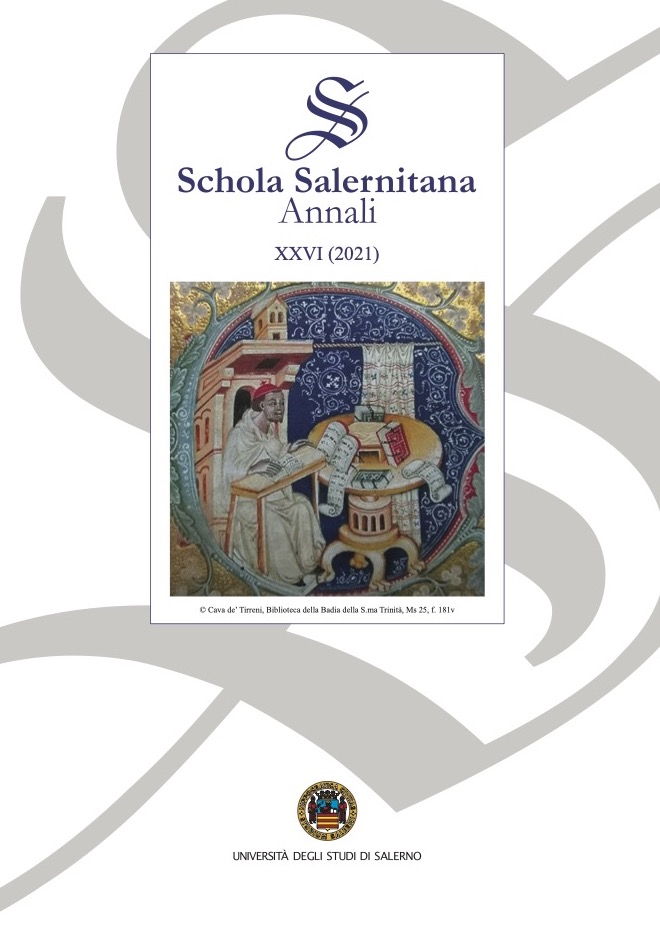Fundamental premises of John Buridan’s semantics
dalla caratterizzazione dei tre livelli linguistici alla predisposizione cognitiva della significatio
Keywords:
Bridan, Logic, Semantics, SignificationAbstract
This essay intends to provide an insightful introduction to some fundamental premises of John Buridan’s semantics, the famous master who taught at the University of Paris in the 14th century. At first, attention is paid to the doctrine of the “three levels of language” and to the semantical (and not syntactical) parallels among them. Following this path, the difference between ad placitum terms and those naturaliter significativi is dealt with, and one reflects – not without allusions to some contemporary topoi – on the various impositional mechanisms described by the Parisian master. Subsequently, the focus is set on the original redefinition – proposed in the first paragraphs of the De suppositionibus – of the notion of significatio, which not only assumes cognitive-intensional features, but is conceived as a process that can be considered fulfilled exclusively when there is a real understanding among the parties involved. In the final pages, one tries to show the deep coherence of much of the Buridanian semantics contents with this basic framework.
Downloads
Downloads
Published
How to Cite
Issue
Section
License
Authors who publish works in this journal agree to the following terms:
a. They retain the copyright but grant the journal the right of first publication of the work licensed under a Creative Commons Attribution 4.0 International License that allows others to reproduce, share, distribute, communicate with the public, exhibit, represent, perform the work with an acknowledgement of the work's authorship (quoting clearly the author and title of the journal).
b. They are able to enter into separate, additional contractual arrangements for the non-exclusive distribution of the journal's published version of the work (e.g., post it to an institutional repository or publish it in a book), with an indication of its initial publication in SSA.
c. At the time of the proposed publication, authors are required to declare that the content and organization of their work is original and do not in any way compromise the rights of third parties or the obligations related to the preservation of moral and economic rights of other authors or other beneficiaries, both of the texts, images, pictures, tables, and other parts of the contribution. They also declare to be aware of the penalties of the Penal Code and special laws concerning forgery and use of false documents. Schola Salernitana - Annali is free from any civil, administrative or criminal responsibility, and the author will preserve the journal from any claim or demand by a third party.





